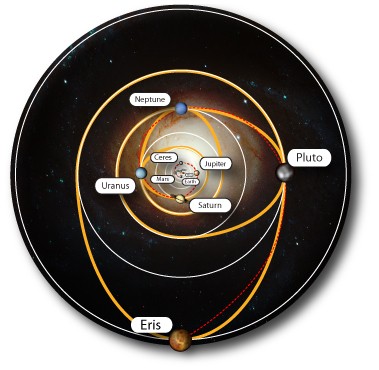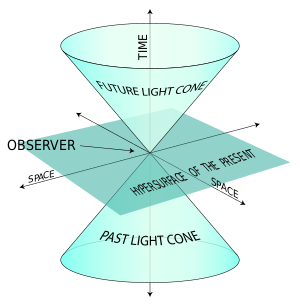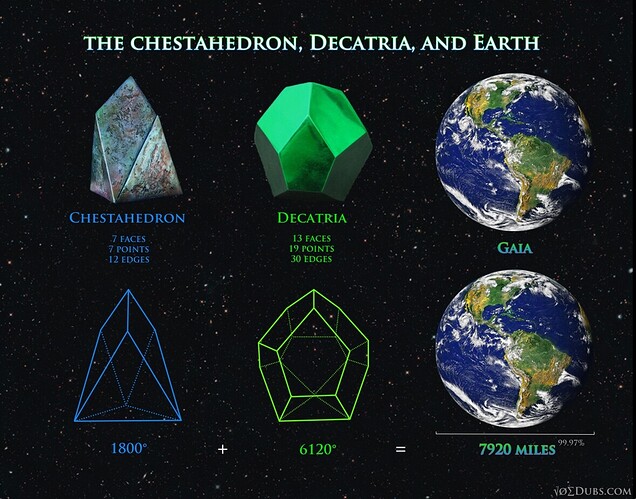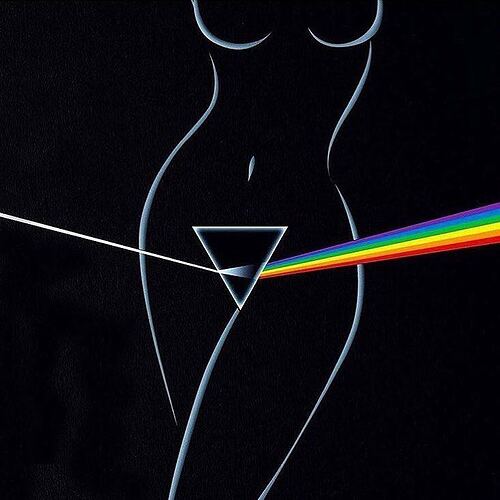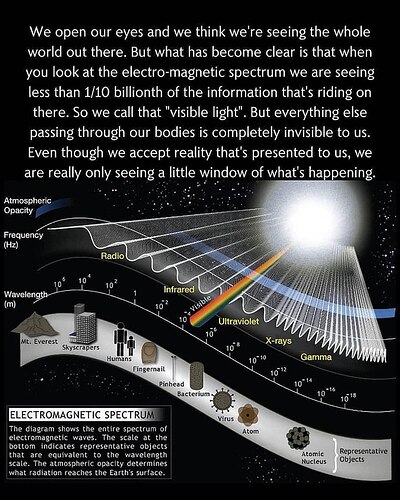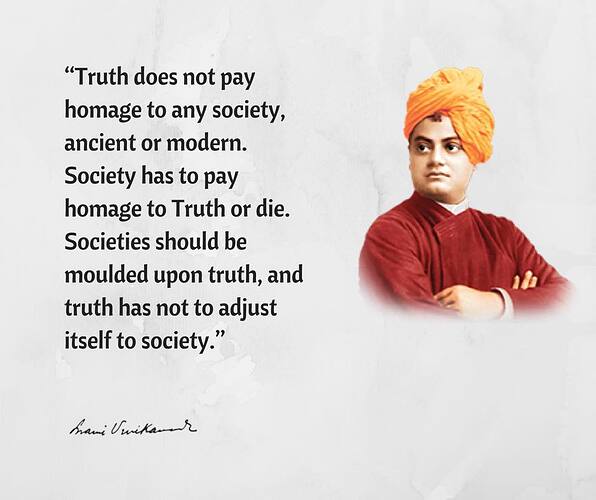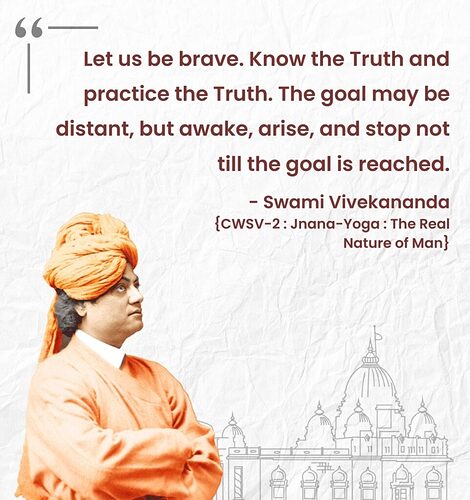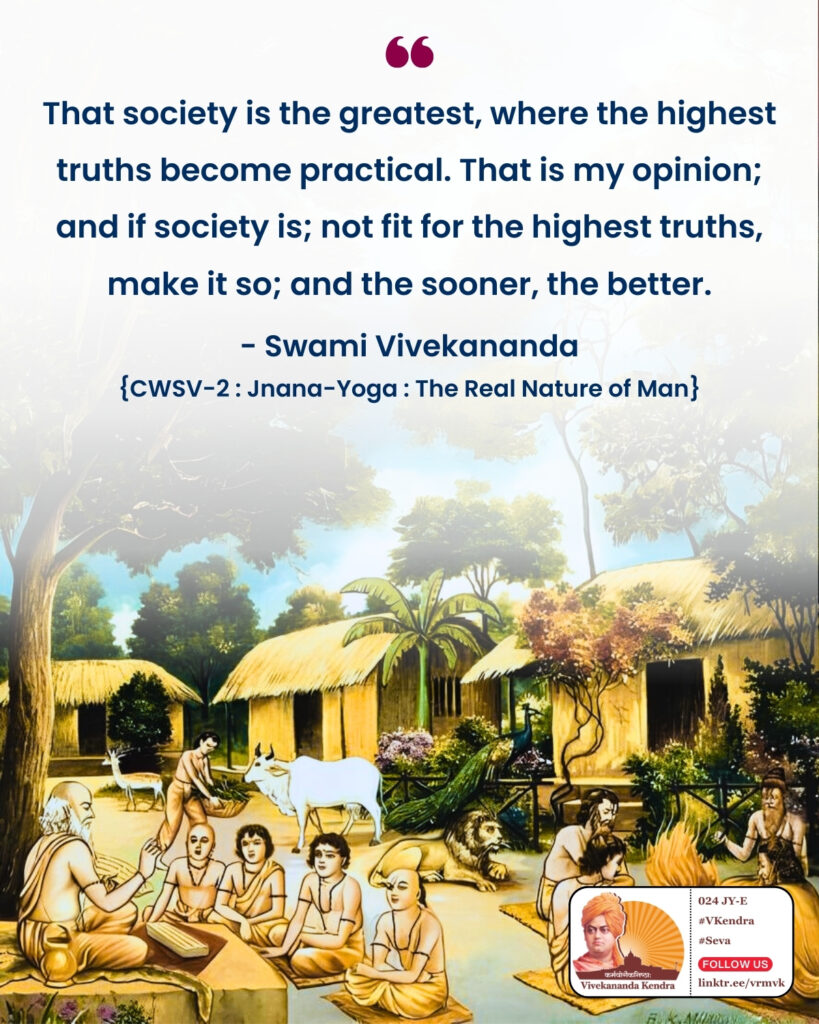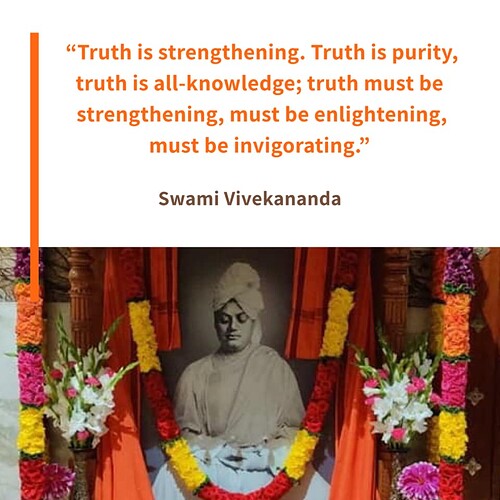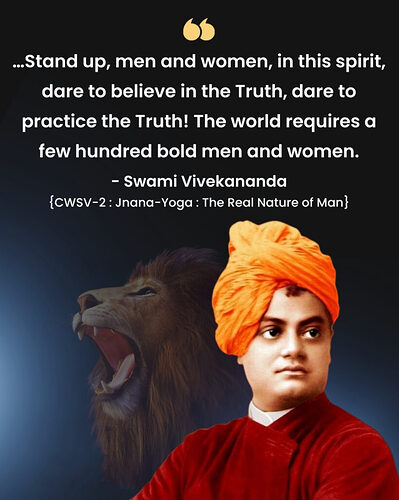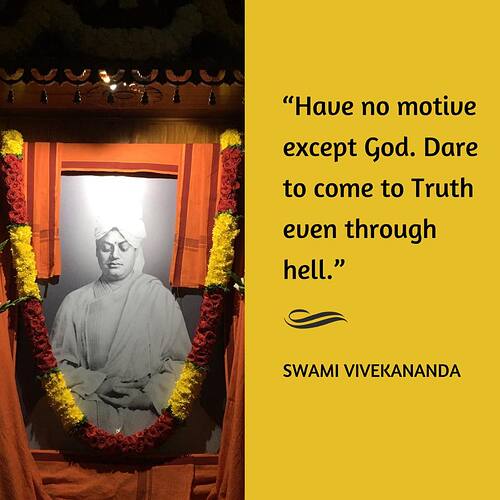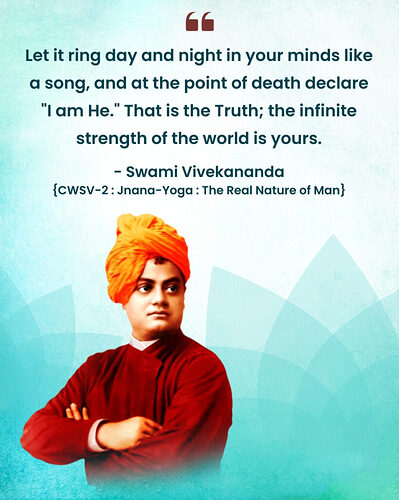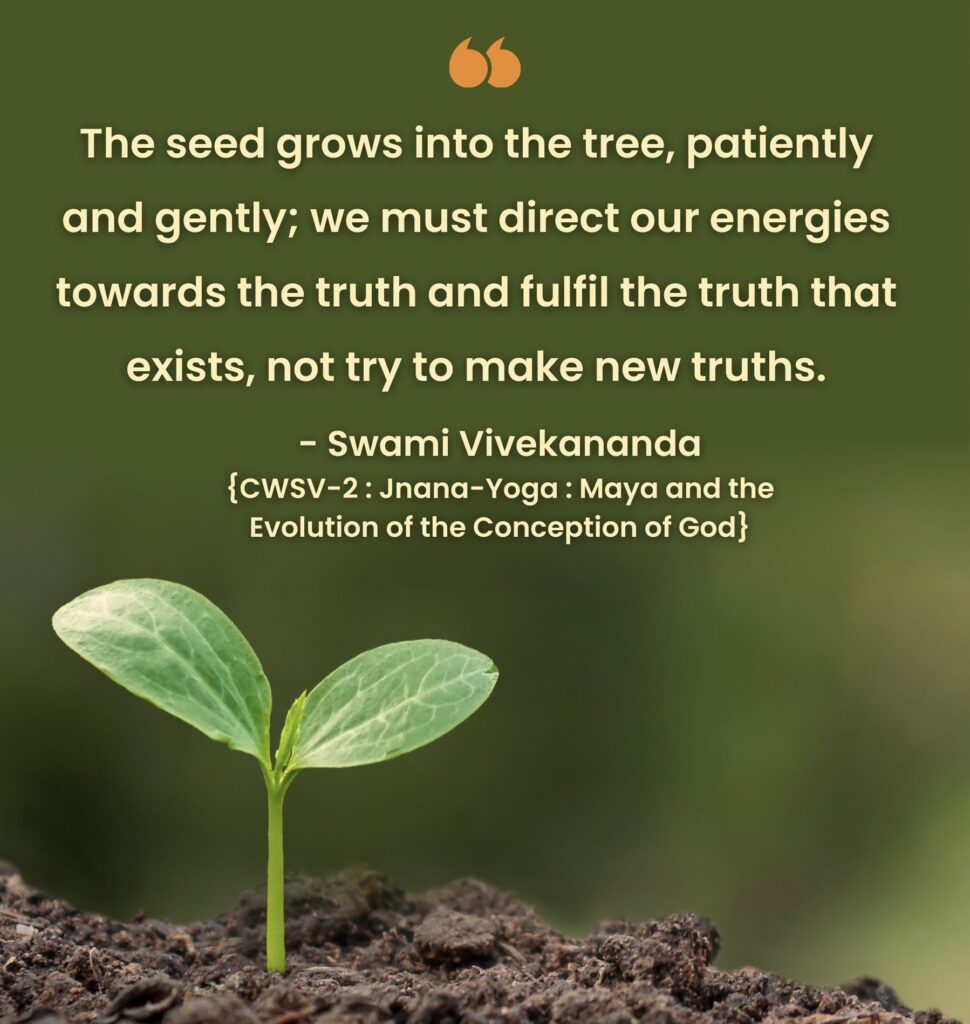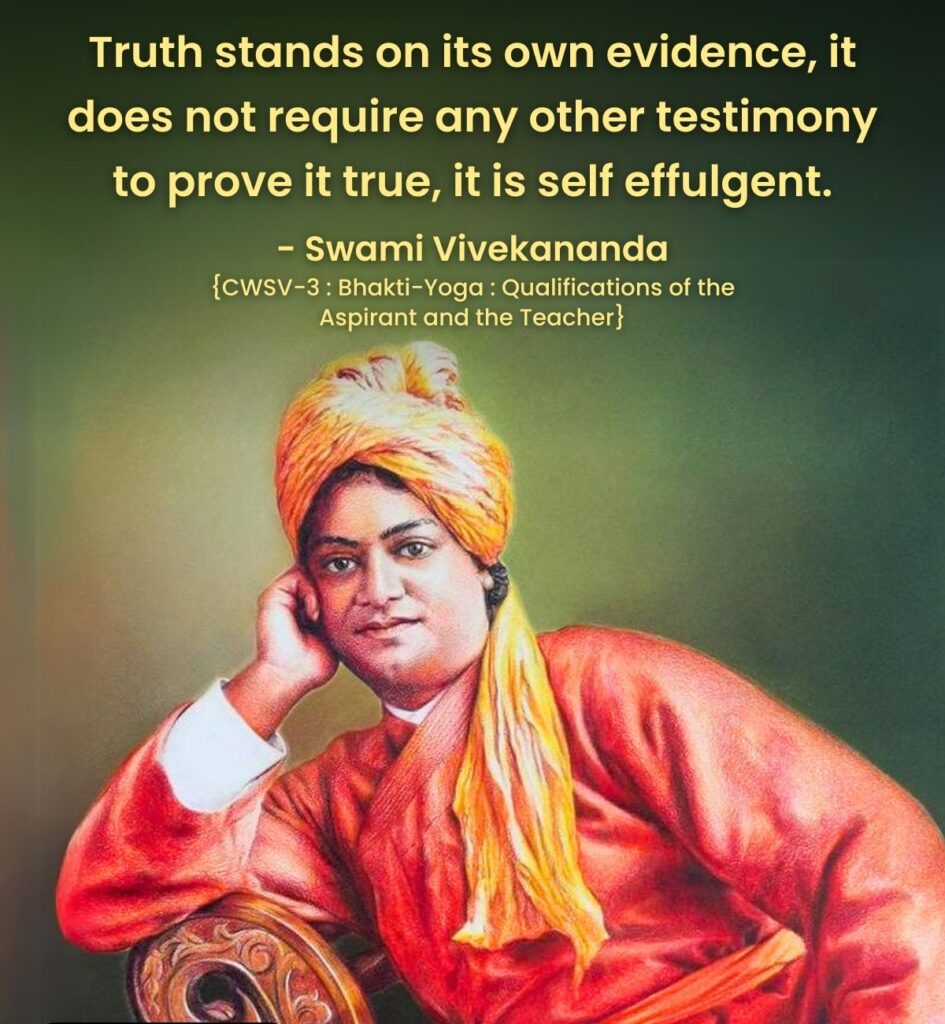@sidharthabahadur I greatly appreciate the depth of thought you’ve brought to our discussions, especially in exploring how the Vedic scriptures reflect the cosmic order and the path to spiritual liberation. As I’ve been reflecting on your perspectives—and based on the study of Patriarchal Order principles (which I believe is the underpinning of all world religions and has been largely lost and a general apostasy has occurred with and led from)—I believe there may be an even deeper, more expansive meaning within these Vedic texts that aligns with the idea of family governance, eternal spiritual unity, and a cyclic nature of existence (the re-incarnation cycle that is a form of hell and that we must escape from; that you yourself explained previously) could reframe how we understand the role of figures like Purusha, Adam, and the nature of humanity's spiritual progression.
I want to explore with you how these same scriptures may not only support your traditional readings and interpretations, but also expand on them in ways that suggest a more family-centered framework—one that aligns with the "Patriarchal Order" in which Adam or similar progenitor Fathers play a central role in governing entire cycles of human existence across Yugas and throughout the progressive vortical cycle of energy / energies.
Of course, while you know I'm no expert on Vedic writings, I do believe that I possess some perspective and insights that proffer an edificatory alternative lens through which to view Vedic records vs traditional modern Hinduism. I do not believe that the Vedic writings should be isolated to a largely singular cultural lens that is mostly currently living within its own echo chamber. I do not mean this in a disrespectful way, but I feel that open mindedness on all of history and information must be sought after and proper context and framing obtained. While I deeply respect the rich traditions of modern Hinduism, I believe that the Vedic writings offer insights that transcend a single cultural lens, inviting broader interpretations across diverse spiritual frameworks and our seeking of a fullness of light and truth (aka enlightenment).
1. Purusha as Adam—and Beyond
You have rightly drawn attention to the Purusha Sukta (Rig Veda 10.90), where the cosmic man (Purusha) is sacrificed to create the universe. This fits beautifully within a Patriarchal Order and familial understanding, but I’d like to expand the interpretation to include the idea that Purusha could represent Adam - and also other progenitor Fathers of previous (and future) races that lived (and that will live) on the Earth (and other spheres) during earlier Yuga cycles (as well as after current ones across boundless spheres).
-
You may find interesting that Joseph Smith, one whom I consider a key figure of the Patriarchal Order (in the same order of our Father Adam, previous Adams, and yet other patriarchs of our yuga/family, spoke of other races existing before Father Adam, and this view aligns with the cyclic nature of Yugas. Each Yuga could represent a different epoch in which a different Father figure—a type of Purusha—served as the spiritual and physical progenitor of that era’s humanity. In this sense, Purusha might not be limited to Father Adam, but also represent progenitors of earlier races during prior cycles. This would make sense in the context of the Vedic people coming from the inner Earth and spreading their knowledge and seed throughout the north to the south, etc. as we have hitherto discussed many a time.
-
In the Purusha Sukta, where it is said “From his head came the heavens, from his feet the earth” (Rig Veda 10.90.4), we can see a cosmic principle at work. Each Purusha represents the Father of a different race or era, with our Father Adam being the most recent progenitor who governs the current Human Family. The Human Family that we belong to is under Adam’s leadership, but other races or beings may have existed before us, each under their own progenitor Father, ETC.
This expands the idea of family governance beyond just our current epoch, connecting it to the cyclic nature of planetary / universe-al existence. This resonates deeply with Vedic concepts of repeating cosmic cycles (the Yugas) and aligns with a Patriarchal (Family At-one-ment) view of divine governance.
2. Cyclic Nature of the Yugas and Multiple Races
The Vedic tradition of Yugas describes the cyclic nature of time, where the world(s) or universe undergoes repeated phases of creation, preservation, destruction, and renewal. Each cycle, which spans millions of years, consists of four Yugas: Satya Yuga (Golden Age), Treta Yuga, Dvapara Yuga, and Kali Yuga. These Yugas represent different cosmic (and perhaps mirrored planetary) ages with varying degrees of spiritual purity and moral order. This cyclical model offers profound insights when viewed through the lens of At-one-ment / Patriarchal (Familial) Order and human spiritual progression.
The idea of at-one-ment is the only true method of progressing each and ALL beings. One cannot be saved without the others and all in a Family. In each Yuga, there may have been different races (species even) or even groups of humans, each with their own First Father, and then Father Adam was established as the progenitor for the current cycle. The Celestial beings and orders spoken of in Vedic texts have much to add to this context—as well do other scriptures such as the Book of Revelation and Doctrine & Covenants.
Joseph Smith’s teachings speak of earlier races or beings that existed before the current Human Family, with Adam as the First Father of this cycle. Joseph’s revelations suggest a cyclical view of creation, where previous race/human epochs culminated and were followed by new dispensations under different progenitor figures. This idea directly parallels the Vedic Yuga system, where each Yuga may represent an epoch of humanity governed by its own Purusha or First Father—including Father Adam in the current cycle.
a) Yuga Cycles and the Role of Purusha (Progenitor Fathers)
In Vedic cosmology, the Purusha Sukta (Rig Veda 10.90) describes the sacrifice of Purusha, from whom the universe and humanity are born. This Purusha can be seen as the cosmic progenitor for each cycle of time. While traditional interpretations often view Purusha as a singular figure, we could expand this to mean multiple progenitor Fathers—each corresponding to a different Yuga or cosmic epoch. Father Adam most assuredly offered such a sacrifice as seems discussed here and the picturesque symbology is rich and quite fitting in my estimation.
-
In the Satya Yuga (Golden Age), the first race of beings is said to be closest to divine perfection, living in harmony with cosmic law (Rta) and free from suffering or decay. The Purusha of this age could represent a progenitor Father who guides a race of highly advanced, spiritual beings—celestial in nature. This parallels Michael Cremo’s work on ancient advanced human civilizations, which suggests that highly evolved human races may have existed, for at least, millions of years ago, a point he discusses in Forbidden Archeology.
-
As the Yugas progress, the spiritual purity of humanity declines, culminating in the Kali Yuga (our current age), marked by materialism, moral decay, and the loss of spiritual wisdom. The Purusha of this Yuga—Father Adam—would be tasked with restoring spiritual order within the Human Family by establishing Patriarchal governance. Father Adam’s role in this age becomes crucial in bringing humanity back to a state of at-one-ment with divine law, echoing the Vedic prophecy of the return to Satya Yuga.
Thus, the cyclical nature of the Yugas can be interpreted as cosmic epochs where different progenitor Fathers (Purushas) guide humanity through cycles of spiritual evolution and decline. In this way, Adam is the First Father for the current epoch, but there may have been previous Fathers who governed earlier races in earlier Yugas.
I also am intrigued by digging into this further at some point regarding major yuga vs a potential of minor or mirror yuga, or yuga within yuga building the vortical flows of progression and mirrored in various manner... at some point.
b) Connection with Joseph Smith’s Teachings on Previous Races
In line with Vedic thought, Joseph Smith taught that previous races existed before Father Adam. This is seen in his discourse on the ancient origins of humanity and his references to pre-Adamic beings or dispensations. Joseph’s teachings offer a cyclic view of creation, where humanity goes through phases of spiritual evolution, culminating in the current dispensation with Father Adam at the helm.
-
Doctrine and Covenants 77:6-7 speaks of the seven seals, each corresponding to a thousand years of human history. While this is typically viewed in a linear context, it can also be seen as cyclic, representing successive periods of human development and spiritual governance. Each seal could correspond to different Yugas, where previous races culminated in cycles of spiritual ascent and descent; there could perhaps be divisions or cycles within cycles that we need to further delve into.
- These cycles are preparatory stages leading to the final dispensation—the return to spiritual unity under Patriarchal governance. Father Adam serves as the pivotal figure in this current Yuga, tasked with guiding his descendants through the Kali Yuga toward family at-one-ment.
- I cannot help but to submit another thought here: Why have the cavern worlders/luciferians attacked the "Patriarchy" so heavily? I would posit that it is because it is antithetical to their goals of disunifying and disrupting the Human Family and to keep us in disharmony, disunity and attempting to obtain an enlightenment separate from each other and our families. This is the luciferian way and the "selfness" or selfishness and self-aggrandizement that is so prevalent in all of their such teachings and urgings.
c) Michael Cremo and Human Antiquity
The work of Michael Cremo, particularly in Forbidden Archeology, provides substantial evidence for the antiquity of the human race, extending far beyond conventional timelines. Cremo suggests that human civilizations have existed for millions of years, challenging mainstream archaeology’s assumption that modern humans are relatively recent. There is a lot to unpack here and many implications towards other non-Human beings, but we'll consider more at another time as it arises.
-
Cremo’s findings support the idea of multiple human epochs, which fits seamlessly with the Yuga cycles described in the Vedas. His discoveries of ancient artifacts, dating back to eras where mainstream science does not acknowledge the existence of humans (and/or others), align with the idea that advanced (human) races lived in earlier Yugas under the guidance of previous Purusha figures.
-
This also ties back to Joseph Smith’s revelations of earlier races—with Adam being the latest in a line of progenitor Fathers. The connection between Cremo’s forbidden archaeology and Vedic Yuga cycles reinforces the idea that human history is far older and more complex than commonly understood, and that Father Adam represents a new beginning for humanity in this current Yuga (or such).
d) Spiritual Decline and the Role of Adam in Kali Yuga
As we move through the Kali Yuga, the decline in Dharma and the fragmentation of the Human Family accelerates. The Vishnu Purana 4.24 clearly outlines the trajectory of humanity’s decline, but it also promises a restoration of spiritual order in the coming Satya Yuga. This period of moral and spiritual degradation mirrors Joseph Smith’s view that apostasy has occurred throughout ALL human history, requiring periodic restorations under divinely appointed Patriarchal figures.
-
Father Adam’s role in the Kali Yuga is to guide the Human Family through this period of darkness, restoring the eternal covenants that ensure the family’s spiritual progression. Just as Krishna played a pivotal role in restoring Dharma in the Mahabharata, Adam’s leadership in this Yuga is essential for bringing humanity back into alignment with divine law. There could be much more to consider and ponder and connect here. I think this goes very deep and may have many twists and turns on the path to properly contextualized truth.
By expanding the discussion of the Yugas to include examples from Vedic texts, Joseph Smith’s teachings, and Michael Cremo’s work on human antiquity, (and I am sure many other works; scriptural and otherwise) we can draw clear parallels between the cyclical nature of human existence in Vedic cosmology and the Patriarchal Order. The idea that each Yuga has its own progenitor Father—with Adam being the First Father of the current epoch—offers a powerful reinterpretation of both Hindu and Patriarchal (you might refer to as quasi-Abrahamic) traditions. This expanded understanding deepens the connection between ancient human races, Purusha figures, and the ongoing cosmic and eternal journey across many cycles as we expand, progress and propagate. This also, to reiterate, aids in the reasoning as to why the cavern worlders and contrariarian luciferian groups who are not part of our collective and have their own antithetical system are at war with us and why these wars are so vibrantly described in Vedic literature.
3. Rta and Dharma: The Eternal Covenant of the Human Family
You’ve highlighted the importance of Rta (cosmic order) and Dharma (duty), which uphold the cosmic balance. These concepts can be viewed as Patriarchal (Familial) laws, divine covenants passed down from The Purusha (Father "Adams") (eg, other progenitor Fathers) to govern the Human Family. Rta, the eternal law of balance, can be understood as the covenant that keeps the family unified under divine law, ensuring that the family remains connected through spiritual bonds. The karmic balance is imperative to retain and this is why covenants and patterns have been set forth for a Savior/Redeemer/Anointed One to perform a great act of At-one-ment which facilitates the repayment of karmic debt thus satisfying both the demands/requirements of justice AND mercy - the great governing left and right hands of the Pharaohs, who incidentally attempted to emulate the Patriarchal Order, but were disallowed such authority (denied the priesthood) due to various reasons we shall not discuss at this moment so as to not further complicate this already complex discussion...
-
Dharma in this context isn’t just individual duty but the collective duty of humanity to maintain its spiritual and family order. In Rig Veda 1.105.15, the rising and falling of those who follow or reject Dharma could be reinterpreted as humanity’s struggle to remain unified under the a Familial arrangement or Patriarchal Order. The Patriarchal covenant(s) and law of the gospel preserves the eternal unity of the Human Family, preventing the fragmentation that we now see in the Kali Yuga. Again, this yoking ourselves with the Great At-one-er, whom we know in this Yuga in the name Jesus the Anointed One, facilitates a path that is direct and offers direct access to karmic satisfaction and facilitates, extends and bridges Dharma. Education in and the expression of understanding said education is manifested through temples via the making and keeping of covenants that relate to connectedness to Him and to His Father—our Father Adam. (Interesting aside, there is much evidence to support Father Adam (re)incarnated into mortality from being a Celestial Being so that He could promulgate this Yuga/Family and there is strong evidence that Jesus was reincarnated...) This is another deep topic that we probably shouldn't dig into here, but was worth noting so that we might return to it later, but it clearly shows the pinnacle importance of temples in both Vedic and other cultures and brings a "why" to their weight and presence, even if their actual activities have become "mysteries" unto the "initiated."
4. Atman as the Reflection of the First Father
The concept of Atman in Hinduism often focuses on the individual soul’s realization of its unity with Brahman. However, in a Familial / Patriarchal context, Atman could be understood as the divine essence passed down from the First Father—whether Adam or an earlier Purusha—that links each individual soul to the eternal family unit(s). When one realizes their Atman, they are not just recognizing their unity with the abstract Brahman, but are reconnecting with the divine lineage of the First Father (see also Malachi 4:6 regarding the turning of the heart of the fathers to the children, and the heart of the children to their fathers - and if they do not the great smiting of the earth with a curse that would follow).
- In the Chandogya Upanishad (6.8.7), the famous phrase “Tat Tvam Asi” (“Thou art That”) could be reinterpreted to mean that you are a part of the First Father’s essence, making spiritual realization not an act of individual detachment, but one of reconnection with the divine family. This perspective aligns with this at-one-ment concept vis-à-vis Patriarchal Order by emphasizing family unity over individual separation.
5. Ancestor Veneration: Adam as the First Pitr
An important concept noted are Pitrs (or ancestors) and their role in guiding their descendants. What if we see Adam as the First Pitr, the original spiritual ancestor whose guidance ensures the eternal welfare of the Human Family? In honoring the Pitrs, we could be reconnecting with Adam and the divine lineage that binds the Human Family together.
-
Manusmriti 3.121 speaks of the importance of honoring the Pitrs for family welfare. In this context, by honoring Adam as the First Pitr, we are ensuring the spiritual continuity of the Human Family under the Patriarchal covenant. This veneration strengthens the eternal bond between the living and the spiritual progenitors of humanity.
6. Moksha as a Return to Family Unity, Not Detachment
Traditional Hinduism often interprets moksha as individual liberation from the cycle of rebirth, focusing on detachment from worldly things. However, I would emphasize that true liberation comes not from detachment but from unity with the Human Family under the governance of Adam and Patriarchal Headship through harmonious familial unity - at-one-ment. Instead of seeking individual freedom, we should be seeking at-one-ment with our family, through the resurrection that brings us together in the eternal family structure.
Again, the crucial point here is that we attain this Moksha, or liberation from the cycle of Samsara and achieve union with our God—our Father and Family.
-
Bhagavad Gita 2.13 speaks of the soul’s journey through different bodies/incarnations, and yet our goal is indeed very clearly—in both Vedic and Patriarchal Order ideologies—to break this endless reincarnation. The concept of reincarnation was very much alive and well in ancient Patriarchally stemmed religions (you might refer to these as Abrahamic, but Abrahamic is somewhat isolated and non-inclusive in my opinion in terms of there being a greater light and truth available by reaching farther back) as well as the Christianity of Christ and those of his era and even beyond. In practice this liberation of the reincarnative cycle is implemented through ordinances and covenants that allow eternal anchors to our God and Family. I would argue that this is also what the ancient Vedics held dear and tried to convey in their writings, but has been twisted and misinterpreted. I believe we can see the soul’s preparation for resurrection (breaking of reincarnation and retention of (woefully misrepresented and explained by the fraud Freud) id and ego, or better framed as our spiritual intelligence coupled with a body and unified into a properly contextualized and framed soul (combination of spirit body (or bodies if you consider there may be multiple orders of spiritual bodies / intelligences that comprise us) and corpuscular/temporal body, but refined and "glorified") and final reunion with the our Family (both that we have been sealed to as well as to our Heavenly Family to whom we are to be sealed to through Jesus the Anointed One. Resurrection I might say is simply a synonym of moksha, thus ensuring that the body and soul are restored to their eternal family roles and into the highest order that we have obtained at present and in our state of eternal progression, where the Patriarchal Order under our Father Adam and His Fathers leads us to spiritual completion and unity.
So, I'll cap this lengthy—and highly incomplete—treatment of these topics and Vedic scriptures and traditions with my thought that: when explored deeply, these seem to suggest that the cyclical nature of existence, the roles of Purusha and Atman, and the concepts of Rta, Dharma, and Pitrs, all point toward a family-centered view of spiritual progression. Each Yuga cycle has its own progenitor Father, and in our current cycle, that Father is Adam (and He is our God—and there are many gods; this is what the ancients knew and we now know again), guiding our Human Family toward eternal unity and spiritual governance and progeneration.
If what I say is not connected to or manifests truth then there would not be the base unit of families that we have in all of creation. We would not see the likeness here below repeating that which is Above so prevalently. This is the Grand Order of Eternity my friend. We are given models in our microcosmic perceptabilities so that we can expand our horizon, our view, to greater Eternal vistas and glorious views. I know this to be true. I believe the Vedic people knew this and tried to preserve this and other powers have attempted to twist and distort this their very best for reasons that have been, again, discussed many times before.
Rather than individual detachment, these teachings should be viewed as emphasizing eternal family unity, with our Family, and our God, Father Adam (and perhaps even earlier progenitors) playing the central role in ensuring the cosmic balance and spiritual progression of the Human Family—so that this yuga and this sphere are not utterly wasted through a curse and wasting. Could this broader view align with the deeper truths of the Vedic texts?
I believe the answer is a resounding, "Yes."
